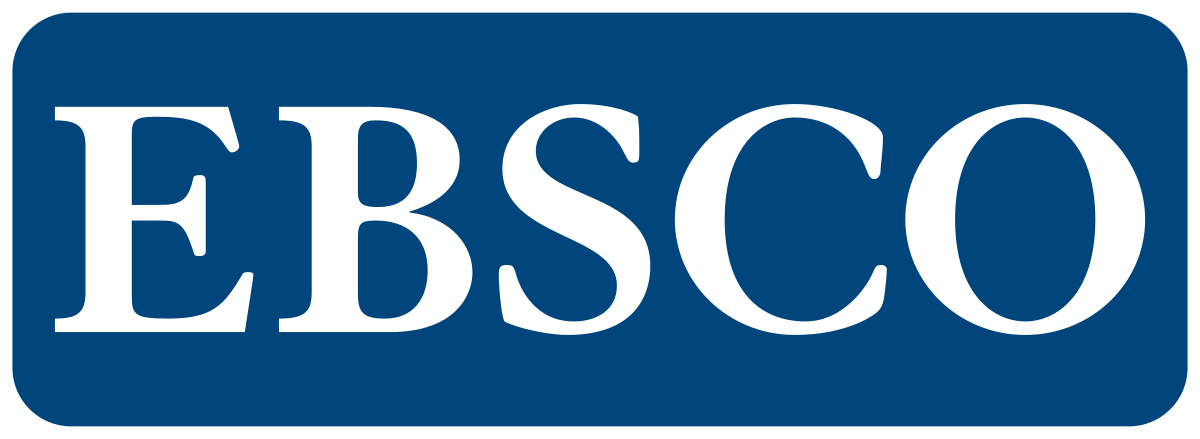Unlocking the Economic Potential of Non-Timber Forest Products in Indonesia's Special Purpose Forest Zones
DOI:
https://doi.org/10.23960/jtepl.v14i4.1166-1175 Abstract View: 252
Abstract View: 252
Abstract
This study explores the diversity of Non-Timber Forest Products (NTFPs) in the Forest Zone with Special Purpose (KHDTK) of Getas-Ngandong, East Java, Indonesia, with the aim of optimizing resource allocation, livelihood diversification, and biodiversity conservation in its planning and management. By conducting a six-month (May–October 2018) biophysical survey through direct observation, coupled with structured social surveys and interviews with key informants in adjacent community-managed forest area. We identified a wide range of NTFPs that are critical for sustainable forest management. Understanding the diversity and distribution of NTFPs is necessary to inform strategic interventions that enhance forest sustainability while supporting the economic resilience of surrounding communities. The findings reveal a rich variety of NTFPs within the region, with agricultural and food crops such as corn, sugarcane, rice, and cassava prevalent inside forest areas, while fruits like mangoes and bananas dominate the surrounding non-forest areas. These insights can serve as valuable inputs, such as integrating fruit tree cultivation into agroforestry zones to enhance income stability, for developing a KHDTK management plan that diversifies income sources, supports local livelihoods, and promotes sustainable forest management practices by balancing economic, ecological, and social benefits.
Keywords: Non-Timber Forest Products (NTFPs); Sustainable Forest Management; KHDTK Getas-Ngandong.
Downloads
References
Arnold J.M., Pérez M.R. 2001. Can non-timber forest products match tropical forest conservation and development objectives?. Ecological economics 39(3): 437–447.
Baliekbis 2018. UGM Panen Perdana Padi Gogo. [UGM first harvest gogo rice]. Available at: http://www.baliekbis.com/ugm-panen-perdana-padi-gogo/ (Retrieved on 20 April 2018) (in Indonesian).
Belcher B., Schreckenberg K. 2007. Commercialization of Non-timber Forest Products: A Reality Check. Development Policy Review 25(3): 355–377.
BPS (Badan Pusat Statistik) 2017a. Kecamatan Jati dalam Angka. BPS Kabupaten Blora. [Jati Sub-district in Numbers. BPS Blora District]: 1–83 (in Indonesian).
BPS (Badan Pusat Statistik) 2017b. Kecamatan Kradenan dalam Angka. BPS Kabupaten Blora. [Kradenan Sub-district in Numbers. BPS Blora District]: 1–83 (in Indonesian).
BPS (Badan Pusat Statistik) 2017c. Kecamatan Pitu dalam Angka. BPS Kabupaten Ngawi. [Pitu Sub-district in Numbers, BPS Ngawi District]: 1–154 (in Indonesian).
BPS (Badan Pusat Statistik) 2017d. Kecamatan Randublatung dalam Angka. BPS Kabupaten Blora. [Randublatung Sub-district in Numbers. BPS Blora District]: 1–83 (in Indonesian).
Butarbutar T. 2009. Potensi Kontribusi Sektor Kehutanan terhadap Ketahanan Pangan Nasional melalui Pengembangan Agroforestry. [Potential Contribution of Forestry Sector to National Food Security through Agroforestry Development]. Jurnal Analisis Kebijakan Kehutanan 6(3): 169–179 (in Indonesian).
FAO (Food and Agriculture Organization) 2000. Non-Timber Forest Products Use and Management. Available at: http://www.fao.org/3/w7715e/w7715e07.htm#TopOfPage. Accessed 31 August 2020.
Hanafi N., Fahruni F., Maimunah S. 2017. Sosialisasi Pemanfaatan Hasil Hutan Bukan Kayu (HHBK) Sebagai Salah Satu Bentuk Pengelolaan KHDTK Kota Palangka Raya. [Socialization of Utilization of Non-Timber Forest Products (NTFP) as One of the Management Forms of KHDTK in Palangka Raya City]. PengabdianMu: Jurnal Ilmiah Pengabdian Kepada Masyarakat 2(1): 31–36 (in Indonesian).
Herdiana D.D., Utami R., Anandito R.B.K. 2014. Kinetika degradasi termal aktivitas antioksidan pada minuman tradisional wedang uwuh siap minum. [The kinetics of thermal degradation of antioxidant activity in ready-to-drink wedang uwuh traditional drinks]. Jurnal Teknosains Pangan 3(3): 44–53 (in Indonesian).
Infoblora 2015. Bupati panen raya jagung di Getas Kradenan, hasilkan 8.4 ton per hektare. Available at: http://www.infoblora.com/2015/02/bupati-panen-raya-jagung-di-getas.html (Retrieved on 20 April 2018) (in Indonesian).
Kar S.P., Jacobson M.G. 2012. NTFP income contribution to household economy and related socio-economic factors: lessons from Bangladesh. Forest Policy and Economics 14(1): 136−142.
Karmilasanti K., Maharani R. 2016. Keanekaragaman Jenis Jamur Ektomikoriza Pada Ekosistem Hutan Dipterokarpa di KHDTK Labanan, Berau, Kalimantan Timur. [Diversity of Ectomycorrhizal Fungi in the Dipterocarp Forest Ecosystem in KHDTK Labanan, Berau, East Kalimantan]. Jurnal Penelitian Ekosistem Dipterokarpa 2(2): 57–66 (in Indonesian).
Kuswantoro H., Sundari T., Suhartina, Susanto G.W.A., Purwantoro, Rozi F., Nugrahaeni N. 2015. Pengusahaan tanaman kedelai dalam sistem wanatani di lahan hutan jati wilayah Jawa Timur. Pusat Penelitian dan Pengembangan Tanaman Pangan. Badan Penelitian dan Pengembangan Pertanian. Prosiding Seminar Hasil Penelitian Tanaman Aneka Kacang dan Umbi 2014, Malang. [Soybean cultivation in agroforestry systems in teak forest land in East Java. Food Crops Research and Development Center. Agricultural Research and Development Agency. Proceedings of the Seminar on the Results of Research on Assorted Nuts and Tubers, 2014, Malang]: 209–220 (in Indonesian).
Neumann R.P., Hirsch E. 2000. Commercialisation of Non-Timber Forest Products: Review and Analysis of Research 1: 1–176. Asia. Center for International Forestry Research, Bogor.
Nuswantoro 2017. Mencari Pola Kelola Hutan Jawa agar Tetap Terjaga dan Tak Abaikan Warga. Mongabay. [Looking for Javanese Forest Management Patterns to Stay Awake and Not Ignore the People]. Available at: https://www.mongabay.co.id/2017/06/14/mencari-pola-kelola-hutan-jawa-agar-tetap-terjaga-dan-tak-abaikan-warga/ (Retrieved on 7 August 2019) (in Indonesian).
Palupi P.T., Siswoko B.D. 2019. Strategi Pemberdayaan Masyarakat Desa Tlogotuwung Dalam Persiapan Pengelolaan Kawasan Hutan Dengan Tujuan Khusus Getas-Ngandong Secara Partisipatif (Doctoral dissertation, Universitas Gadjah Mada). [Tlogotuwung Village Community Empowerment Strategy in Preparing Participatory Forest Area Management with the Special Purpose of Getas-Ngandong]. (in Indonesian).
Pramono A.A., Fauzi M.A., Widyani N., Heriansyah I., Roshetko J.M. 2010. Pengelolaan hutan jati rakyat: panduan lapangan untuk petani. Center for International Forestry Research, Bogor. [Community teak forest management: a field guide for farmers]: 1–100 (in Indonesian).
Rizkillah M.A. 2018. Inventarisasi Hasil Hutan Bukan Kayu Bambu Di Hutan Kemasyarakat
Downloads
Published
How to Cite
Issue
Section
License
Copyright (c) 2025 Hermudananto Hermudananto

This work is licensed under a Creative Commons Attribution-ShareAlike 4.0 International License.
Authors who publish with this journal agree to the following terms:
Authors retain copyright and grant the journal right of first publication with the work simultaneously licensed under a Creative Commons Attribution-ShareAlike 4.0 International Lice that allows others to share the work with an acknowledgement of the work's authorship and initial publication in this journal.
Authors are able to enter into separate, additional contractual arrangements for the non-exclusive distribution of the journal's published version of the work (e.g., post it to an institutional repository or publish it in a book), with an acknowledgement of its initial publication in this journal.
Authors are permitted and encouraged to post their work online (e.g., in institutional repositories or on their website) prior to and during the submission process, as it can lead to productive exchanges, as well as earlier and greater citation of published work (See The Effect of Open Access).
Jurnal Teknik Pertanian Lampung

JTEPL is licensed under a Creative Commons Attribution-ShareAlike 4.0 International License.













